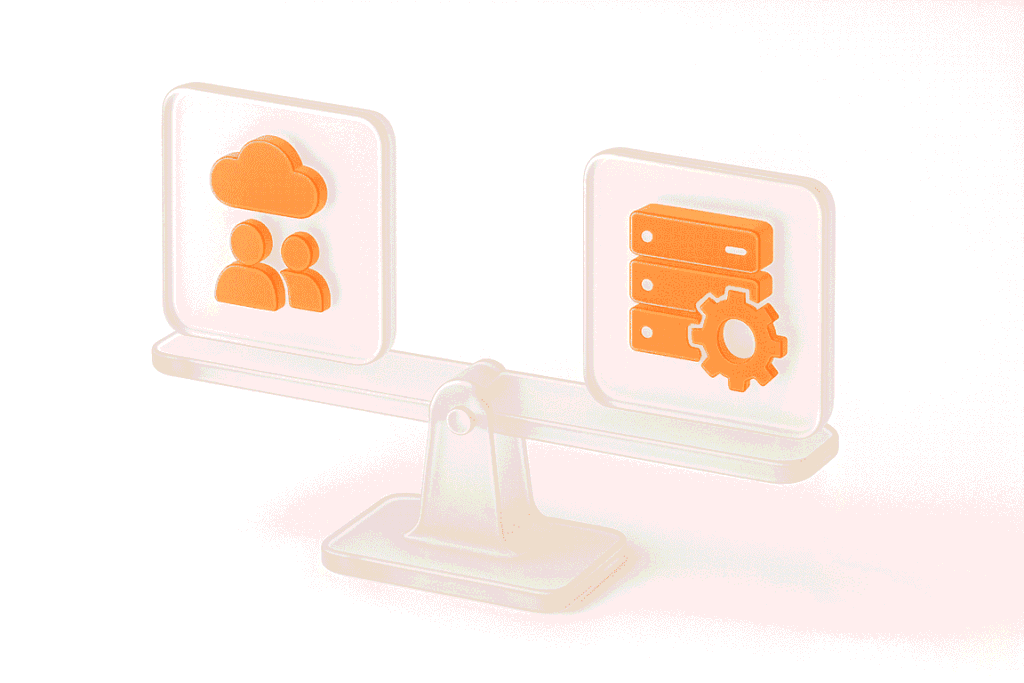When you’re working with microservices or APIs, one miscommunication between systems can break your entire application. That’s where you need contract testing.
This guide will walk you through what contract testing is, how it works, and why it’s become essential for teams building distributed systems. Whether you’re a developer, QA engineer, or architect, you’ll learn how contract testing helps you catch integration issues early, reduce dependencies between teams, and speed up delivery without losing confidence in your system’s stability.
Ready to explore how contract testing fits into your workflow? Let’s dive in.
What Is Contract Testing?
The “contract” here refers to the agreed structure of requests and responses; the format, data, and expectations involved in the interaction. If the contract is broken on either side (for instance, if a response field changes or disappears), it can lead to critical failures downstream.
Instead of running full-blown integration tests involving live services, contract tests simulate the interaction between the two parties in isolation. This speeds up the feedback loop, reduces complexity, and ensures your systems remain loosely coupled.
In modern development environments, especially those using microservices, third-party APIs, or CI/CD pipelines, contract testing plays a key role in maintaining confidence and minimizing regressions as systems evolve.
Main Aspects of Contract Testing
To really get the value out of contract testing, it’s important to understand the moving parts behind it. At its core, contract testing is about communication, between services, teams, and expectations.
Let’s break down the key aspects that make contract testing both powerful and practical:
Benefits of Contract Testing
So why are more teams adopting contract testing as a core part of their quality strategy? Because it solves real-world problems that traditional integration testing can’t always catch, and it does it faster, cheaper, and with less hassle.
Here are some of the biggest benefits:
Early Detection of Integration Issues
Contract testing catches mismatches between services before they hit staging or production. That means fewer last-minute bugs, fewer firefights, and more predictable deployments.
Decoupling of Development Teams
Backend and frontend teams (or any consumer-provider pairs) can work in parallel without constantly syncing or blocking each other. As long as the contract is respected, each side is free to move at its own pace.
Quick, Lightweight Tests with High ROI
Contract tests are fast to run and easy to maintain. They don’t require full environments or complicated test setups, which makes them perfect for CI/CD pipelines.
Repeatable and Scalable
Once you have contract testing in place, you can run it automatically with every build. It scales beautifully with your architecture, whether you have 5 services or 500.
Faster Feedback Loops
Because tests are local and isolated, feedback comes fast. Developers know within seconds if they’ve broken a contract, which means faster fixes and cleaner commits.
Support for Microservices and Distributed Systems
Contract testing shines in environments with lots of independent components. It acts as a safety net, ensuring every piece fits into the puzzle, even as individual services evolve.
Improved Confidence and Stability
When contracts are well-defined and well-tested, teams feel more confident making changes. That leads to higher velocity without sacrificing quality.
Contract Testing vs. Integration Testing
Although both software contract testing and integration testing aim to validate how systems work together, they serve very different purposes in the development process. Here’s a detailed comparison to help you understand when and why to use each:
| Contract Testing | Integration Testing | |
| Purpose | Validates contract between systems (e.g., API and consumer) | Checks full system behavior and interaction |
| Test Scope | Narrow focus on request/response interaction | Broad validation including side effects |
| Speed & Feedback | Fast, lightweight, ideal for CI/CD | Slower, requires full environments |
| Dependencies | Uses mocks/stubs, fewer dependencies | Needs all real services up and running |
| Maintenance | Low-maintenance if contracts are stable | Can be fragile, harder to maintain |
| Error Detection Timing | Detects issues early before staging | Issues found later in staging or production |
| Use Cases | Microservices, consumer-driven dev, API versioning, parallel teams | End-to-end tests, regression, legacy system checks |
Purpose
Contract Testing is designed to validate the agreement (contract) between two systems, typically a provider (API) and a consumer (frontend or another service). It ensures that what the provider promises (e.g., response structure, status codes) is what the consumer expects.
Integration Testing checks whether multiple components or systems work together as a whole. It includes verifying data flow, service orchestration, and how systems behave when combined.
Test Scope
Contract Testing has a narrow scope. It focuses only on the interaction, such as a request and its expected response. It doesn’t care about what happens inside the service or how the data is processed.
Integration Testing has a broader scope, validating not only the interface but also internal behavior, side effects, and database changes resulting from that interaction.
Speed and Feedback
Contract Tests are fast and lightweight. Since they run in isolation and don’t require full environments, they provide rapid feedback, perfect for continuous integration.
Integration Tests are generally slower because they depend on real services and infrastructure. This can delay feedback and lead to longer build times.
Dependencies
Contract Testing minimizes dependencies. It uses mocks or stubs to simulate the provider or consumer, allowing both sides to develop and test independently.
Integration Testing requires all dependent services to be up, configured, and accessible. If any component is down, the test may fail, not necessarily because of a bug.
Maintenance
Contract Tests are low-maintenance, especially when contracts don’t change frequently. Once the contract is defined and verified, the test remains stable.
Integration Tests can be fragile and hard to maintain, especially in environments with unstable data or frequent changes. Debugging failures often requires checking multiple systems.
Use Cases
| Contract Testing | Integration Testing |
| Microservices | End-to-end scenarios |
| Consumer-driven development | Regression testing |
| API versioning | Ensuring legacy system interactions |
| Agile teams working in parallel |
Error Detection Timing
Contract Testing helps teams catch issues early, often before staging or integration phases. It acts as a gatekeeper to prevent incompatible changes.
Integration Testing may only reveal problems later in the pipeline, during staging or even production, increasing the cost and impact of fixes.
Use Cases of Contract Testing
Contract testing is a powerful approach that fits seamlessly into modern development workflows, especially those involving APIs, microservices, and distributed teams. Below are key use cases where contract tests shine:
Best Contract Testing Tools
Choosing the right contract testing software or tool depends on your stack, team size, and how deeply you want to automate API testing across services. Below are some of the most widely used and trusted tools for implementing contract tests in modern software development.
| Tool | Pact | Spring Cloud Contract | Swagger/OpenAPI | Karate DSL | RestAssured |
| Best For | Microservices and consumer-driven contracts | Spring-based Java microservices | API design and documentation validation | Readable, all-in-one test automation | Java teams validating REST APIs |
| Supports Consumer-Driven Testing | Yes, ✅ | Yes, ✅ | Indirectly via other tools | Yes, ✅ | Partially |
| Language Support | Java, JS, Python, .NET, Go | Java, Groovy | Language-agnostic | Java | Java |
| CI/CD Integration | Strong | Strong | Moderate | Strong | Good |
| Mocking/Middleware | Pact Mock Server | Stub Runner | Mock servers via OpenAPI | Yes | Manual |
1. Pact
Pact is one of the most popular contract testing frameworks, especially for microservices. It supports consumer-driven contracts, allowing frontend or client services to define their expectations, which providers then validate against. Pact supports multiple languages and integrates well into CI/CD pipelines.
Highlights:
2. Spring Cloud Contract
Spring Cloud Contract is built specifically for the Java ecosystem and works well with Spring Boot microservices. It enables both consumer- and provider-side contract generation, and integrates easily with JUnit, Maven, and other tools in the Java space.
Highlights:
3. Swagger/OpenAPI
While not a contract testing tool in the strictest sense, Swagger (now OpenAPI) is widely used to define API contracts. These definitions can then be validated using tools like Dredd or Postman to ensure implementations meet the spec.
Highlights:
4. Karate DSL
Karate DSL is a testing tool that supports API testing, performance testing, and contract testing, all in one framework. It allows writing readable, BDD-style test scripts and supports contract assertions through OpenAPI specs.
Highlights:
5. RestAssured
RestAssured is a Java-based library used primarily for API testing but can be extended for contract-like assertions. It’s more code-focused than Pact or Spring Cloud Contract, but offers detailed validation of HTTP requests and responses.
Highlights:
Final Thought
As systems become more distributed and development cycles grow shorter, the need for reliable, efficient communication between services becomes more important. That’s why contract testing is implemented.
It brings clarity to service expectations, accelerates feedback loops, and helps teams move independently without risking integration failures. Whether you’re building microservices, integrating with third parties, or scaling fast-moving teams, contract testing provides a safety net that’s easy to automate and hard to outgrow.
Start small, define your first contracts, and let your test suite grow as your system does. And if you’re looking to round out your QA strategy, explore PFLB’s load testing services to make sure your applications perform as they should.





